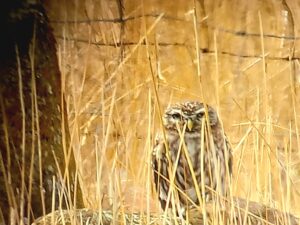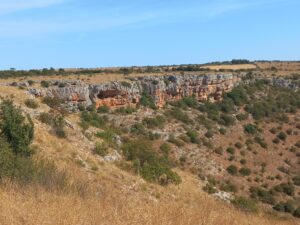Birding Apulia
The stiletto heel of the Italian “Boot,” Apulia offers a profusion of spring flowers and an excellent variety of butterflies, birds, and other animals. The dramatic karst landscapes, with gorges, caves, and sinkholes, and beautiful seacoasts create a mosaic of many different habitats. The region’s many family-run “masserie”—fortified farm houses transformed into charming country inns—provide easy access to excellent sites for the impressive spring raptor migration, and spring and fall alike find a fascinating variety of migrant warblers, shorebirds, pipits, and flycatchers passing through this unique corner of Europe.
In northern Apulia, Alta Murgia National Park stretches across a 650-square-mile rocky plateau covered by steppe-like vegetation that is home to such specialties as the european roller, woodchat shrike, calandra and greater short-toed larks, and even the extremely rare lesser gray shrike.
Sardinian and spectacled warblers sing from the bushes, and sparsely vegetated rocky patches are home to blue rock thrushes and rock sparrows. Scattered ruins of ancient farm buildings are good places to look for little owls and spotless starlings, both of which nest in crannies in the stone walls. The famous gravine, steep and inaccessible erosional remnants, also offer the chance to see breeding egyptian vulture and lanner falcon.
Apulia’s Gargano National Park, one of Italy’s most precious natural preserves, protects an extraordinary concentration of different habitats: rocky coasts, beech woodlands, the Lesina and Varano lagoons, and Mediterranean pine forests with trees more than 500 years old.
The Gargano promontory functions as a biogeographic bridge between the Balkans and the Italian peninsula. Among the many notable species found here are the eurasian eagle awl, european roller, short-toed eagle, lesser kestrel, lanner falcon, and wryneck. In the forests there are collared flycatchers, western orphean and wood warblers, and both white-backed and middle spotted woodpeckers.
“We had a great trip with Marco. We went to an interesting variety of sites and learnt much about local birds, ecology, land use & history! Marco is incredibly knowledgeable and shares this in a relaxed fashion. We really enjoyed his company!” – Happy Customer from TripAdvisor
